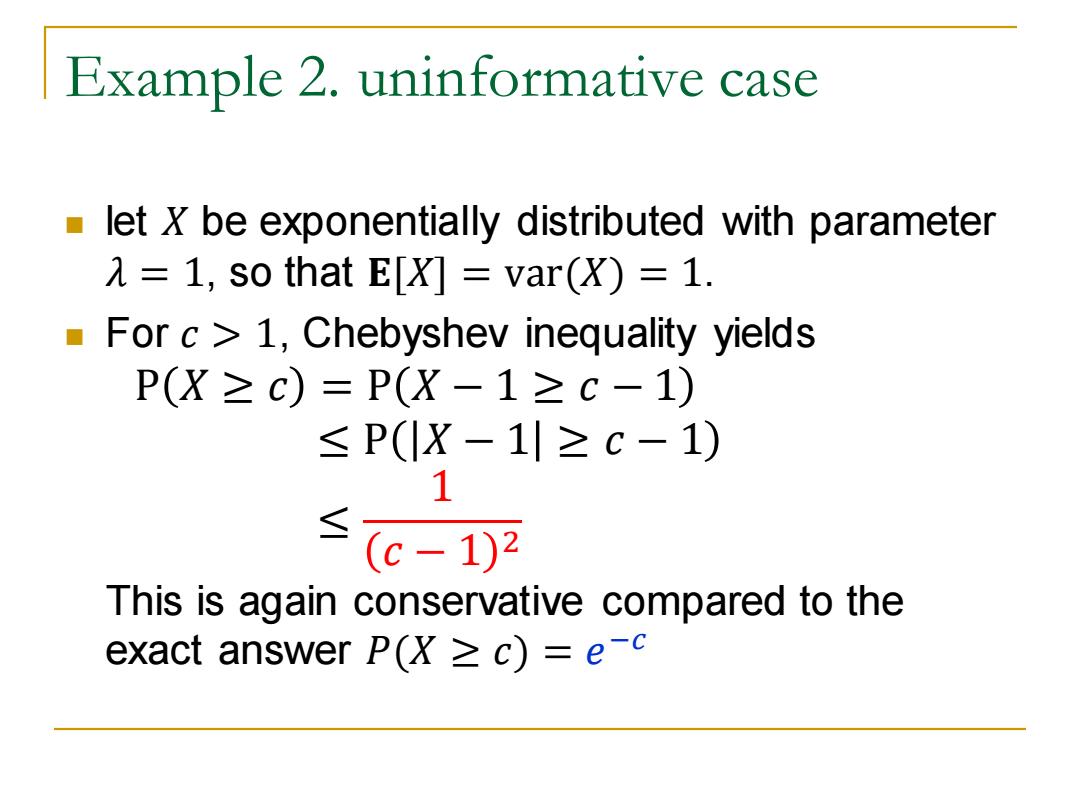
Example 2.uninformative case let X be exponentially distributed with parameter λ=1,so that E[X灯=var(X)=1. For c>1,Chebyshev inequality yields P(X≥c)=P(X-1≥c-1) ≤P(IX-1≥c-1) 1 (c-1)2 This is again conservative compared to the exact answer P(>c)=ec
Example 2. uninformative case ◼ let 𝑋 be exponentially distributed with parameter 𝜆 = 1, so that 𝐄[𝑋] = var(𝑋) = 1. ◼ For 𝑐 > 1, Chebyshev inequality yields P 𝑋 ≥ 𝑐 = P 𝑋 − 1 ≥ 𝑐 − 1 ≤ P 𝑋 − 1 ≥ 𝑐 − 1 ≤ 1 𝑐 − 1 2 This is again conservative compared to the exact answer 𝑃(𝑋 ≥ 𝑐) = 𝑒 −𝑐
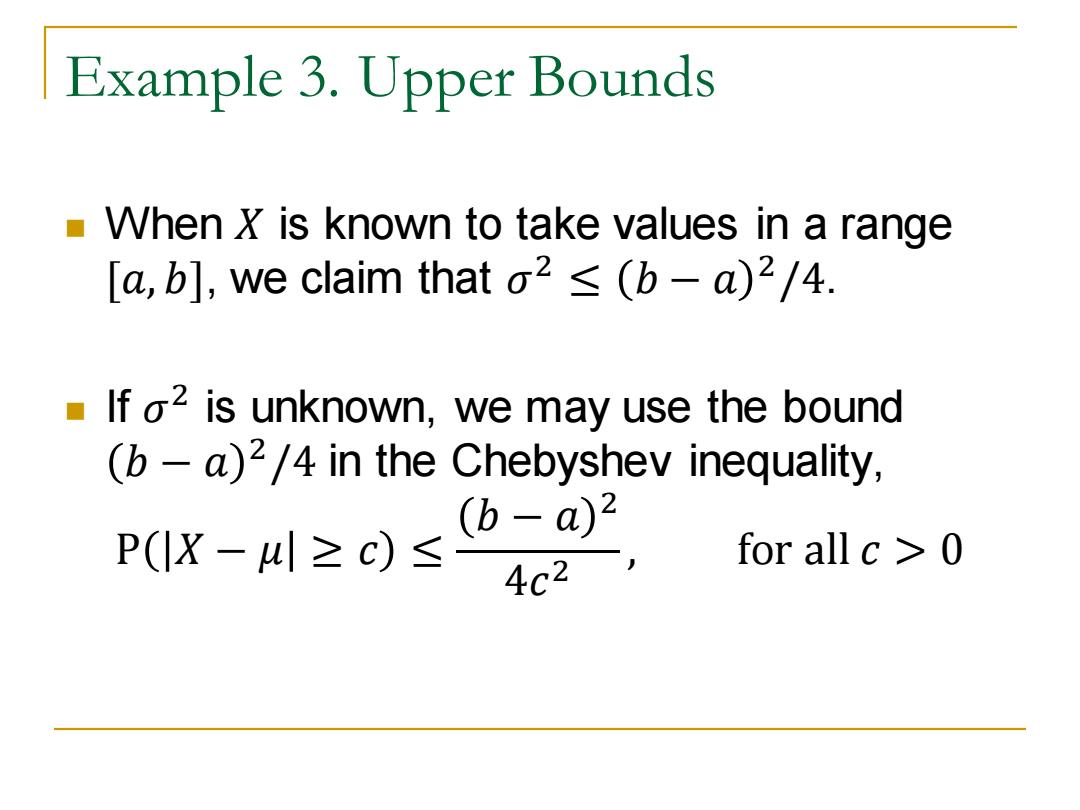
Example 3.Upper Bounds -When X is known to take values in a range [a,b],we claim thatσ2≤(b-a)2/4. If o2 is unknown,we may use the bound (b-a)2/4 in the Chebyshev inequality, P(X-M≥c)s6-a2 for allc >0 4c2
Example 3. Upper Bounds ◼ When 𝑋 is known to take values in a range [𝑎, 𝑏], we claim that 𝜎 2 ≤ 𝑏 − 𝑎 2 /4. ◼ If 𝜎 2 is unknown, we may use the bound 𝑏 − 𝑎 2 /4 in the Chebyshev inequality, P 𝑋 − 𝜇 ≥ 𝑐 ≤ 𝑏 − 𝑎 2 4𝑐2 , for all 𝑐 > 0
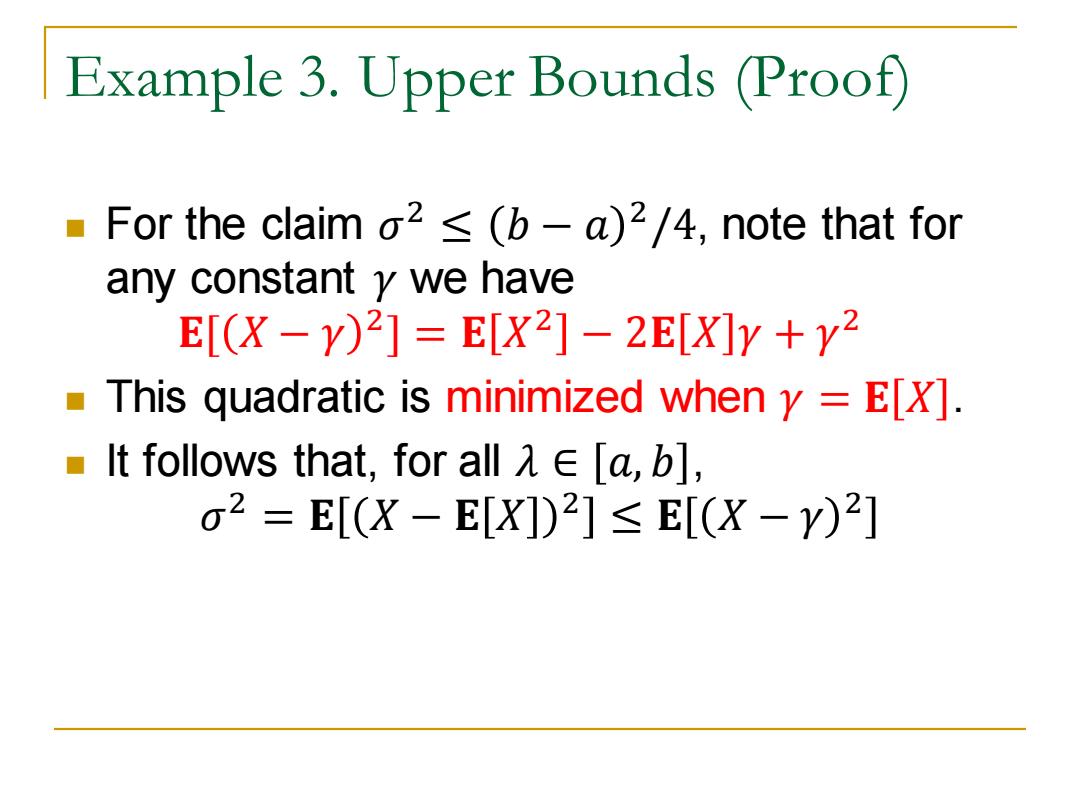
Example 3.Upper Bounds (Proof) For the claim o2<(b-a)2/4,note that for any constant y we have E[(X-Y)2]=E[X2]-2E[X]y+Y2 This quadratic is minimized when y=EX]. It follows that,.for allλ∈[a,b], σ2=E[(X-E[X])2]≤E[(X-Y)2]
Example 3. Upper Bounds (Proof) ◼ For the claim 𝜎 2 ≤ 𝑏 − 𝑎 2 /4, note that for any constant 𝛾 we have 𝐄[ 𝑋 − 𝛾 2 ] = 𝐄 𝑋 2 − 2𝐄 𝑋 𝛾 + 𝛾 2 ◼ This quadratic is minimized when 𝛾 = 𝐄 𝑋 . ◼ It follows that, for all 𝜆 ∈ 𝑎, 𝑏 , 𝜎 2 = 𝐄 𝑋 − 𝐄 𝑋 2 ≤ 𝐄 𝑋 − 𝛾 2
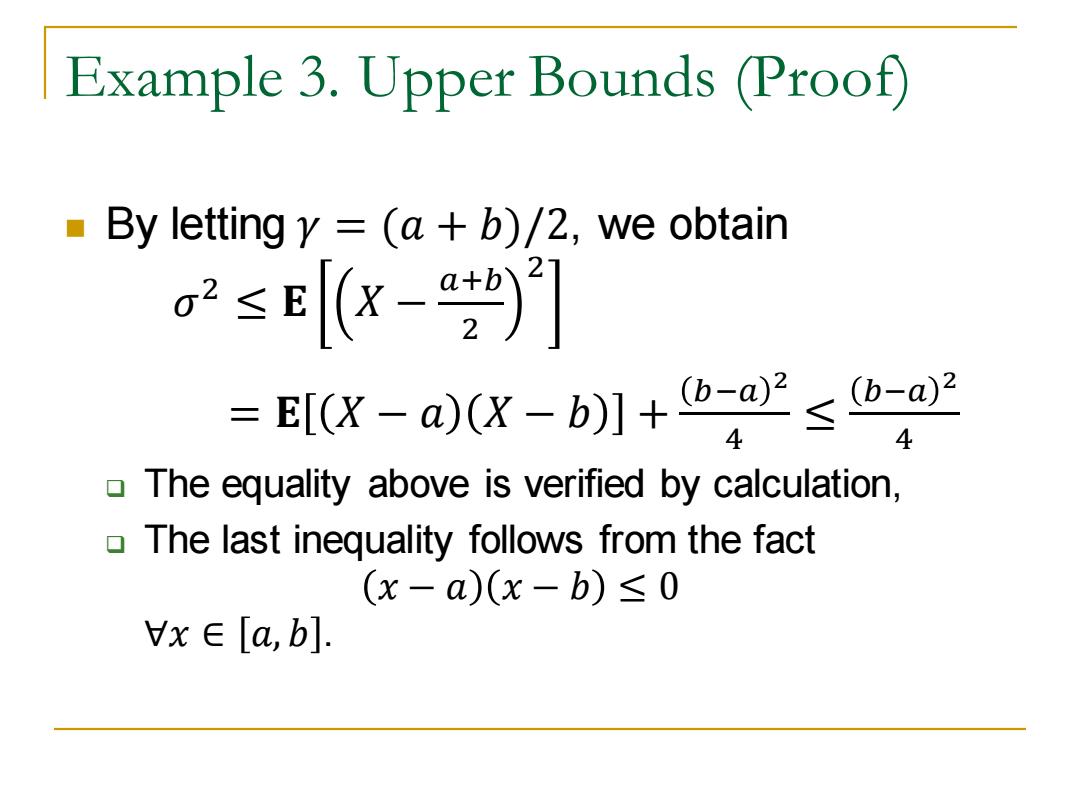
Example 3.Upper Bounds (Proof) By lettingy =(a+b)/2,we obtain 2≤E(x-4)] =E[(X-a0(X-b】+b-a2≤b-o2 4 4 The equality above is verified by calculation, The last inequality follows from the fact (x-a)(x-b)≤0 x∈[a,b]
Example 3. Upper Bounds (Proof) ◼ By letting 𝛾 = (𝑎 + 𝑏)/2, we obtain 𝜎 2 ≤ 𝐄 𝑋 − 𝑎+𝑏 2 2 = 𝐄 𝑋 − 𝑎 𝑋 − 𝑏 + 𝑏−𝑎 2 4 ≤ 𝑏−𝑎 2 4 ❑ The equality above is verified by calculation, ❑ The last inequality follows from the fact 𝑥 − 𝑎 𝑥 − 𝑏 ≤ 0 ∀𝑥 ∈ 𝑎, 𝑏
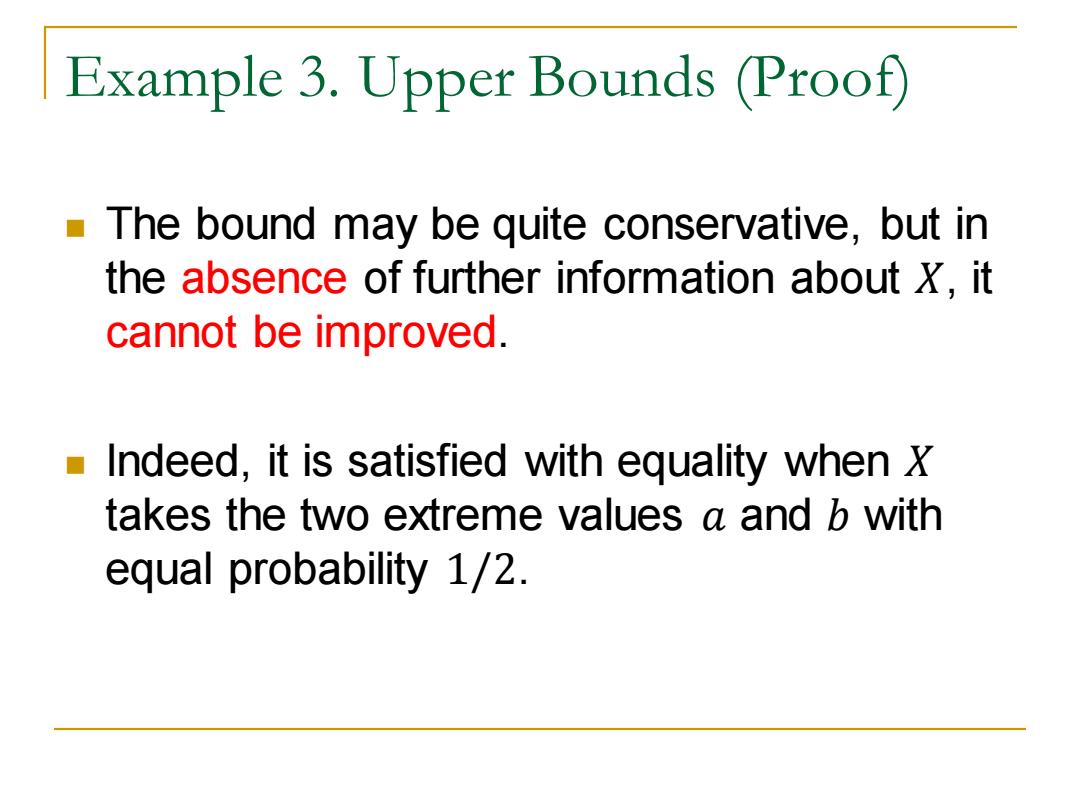
Example 3.Upper Bounds (Proof) The bound may be quite conservative,but in the absence of further information about X,it cannot be improved. Indeed,it is satisfied with equality when X takes the two extreme values a and b with equal probability 1/2
Example 3. Upper Bounds (Proof) ◼ The bound may be quite conservative, but in the absence of further information about 𝑋, it cannot be improved. ◼ Indeed, it is satisfied with equality when 𝑋 takes the two extreme values 𝑎 and 𝑏 with equal probability 1/2